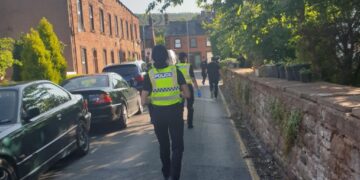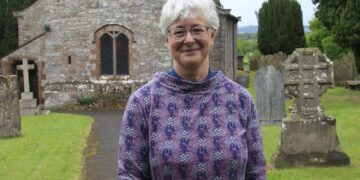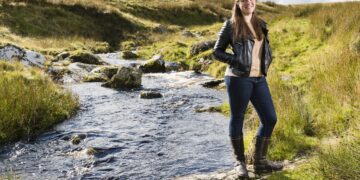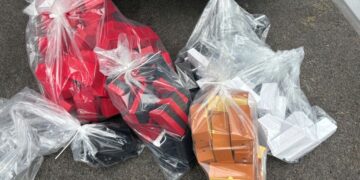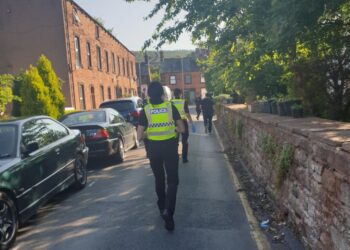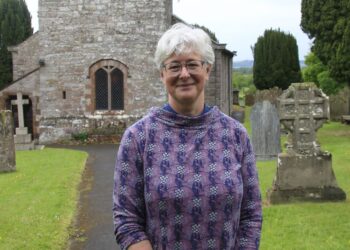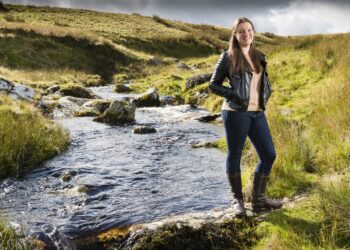
Artefacts which were collected from more than 1,800 molehills located across the Epiacum Roman Fort on Alston Moor were washed and sorted at a recent open public event.
Dr Jan Harding, director of the molehill fieldwork project and trustee of Epiacum Heritage, said Roman pottery was the most abundant find.
“Variations in both its date and type allow us to understand when a buried building may have been occupied and what may have happened within it.
“As an example, fine pottery ware suggests its use by wealthier Roman officers, while coarser ware is more commonly connected with food preparation and the activities of lower ranking Roman soldiers,” said Dr Harding.
Metalwork, and especially nails, was also commonplace, as well as the presence of slag, which suggests manufacturing took place at the site during its potentially 200-year occupation by the Romans.
Dr Harding, a retired archaeologist and former university lecturer, said he had been with the charity for only about a year and this was the first project he had headed up for them.
Over five days in April, a large team of volunteers participated in the project at Epiacum Roman Fort which saw investigations being made into the fort’s interior, the bathhouse, and its vicus, or associated settlement.
These all help to provide insights into the archaeology of this remarkable upland landscape, said Dr Harding.
Less light, however, was thrown on the possible existence on the site of a mansio, which is accommodation for official visitors or travellers who want to stay overnight, a bit like a hotel.
Dr Harding said: “One of those has been speculated to have existed at Epiacum and it was one of the areas we looked at. I have to say, of all the areas we looked at this season, it was probably the least successful.”
That is because erosion might have covered the site and the moles were not going deep enough to bring up the archeology.
However, he said the other sites which were looked at were all very informative.

“We did the entire interior of the fort itself which produced quite a lot of finds and we did the bath house. There are two possible bath houses and we looked at one of those which lies immediately outside the fort on one side and that also produced quite a few finds.
“Then we looked at the vicus, or the associated settlement. All Roman forts tend to have these, because the presence of the Roman army meant there was a need for civilians to be in the area providing services and goods and this has led to these vicus’s which you find around Roman forts,” said Dr Harding.
He added: “There is certainly one at Epiacum and it is most likely that Epiacum was surrounded by domestic or civilian houses and fields.”
The washed items will now be despatched to artefact specialists around the country for further analysis, along with more than 2,000 other objects from previous years of molehill collection. The outcome will be the most detailed interpretation of this landscape to date.
Once the analysis is complete, their reports and all the finds then come back to Dr Harding who will write them up as a publication.
“One of the problems is that it is not a fort which has seen much excavation. The only excavation was in 1957 and 1958 and that sort of limits the state of our knowledge and our understanding of the Roman fort and its hinterland. The molehills are one way of partly bridging that gap by providing a detailed investigation and interpretation of what may be happening across this landscape,” said Dr Harding.
When moles dig their underground tunnels, small objects get redeposited to the surface in their upcast or molehills, and by collecting and studying these artefacts we can start to tell a story about the buried archaeology without a full excavation taking place, which can be very costly to undertake.
Epiacum Roman Fort is a couple of miles from Alston in the North Pennines Area of Outstanding Natural Beauty (AONB). It is a scheduled ancient monument.
The Molehill Project is funded by a Farming in Protected Landscapes Grant administered by the AONB.

